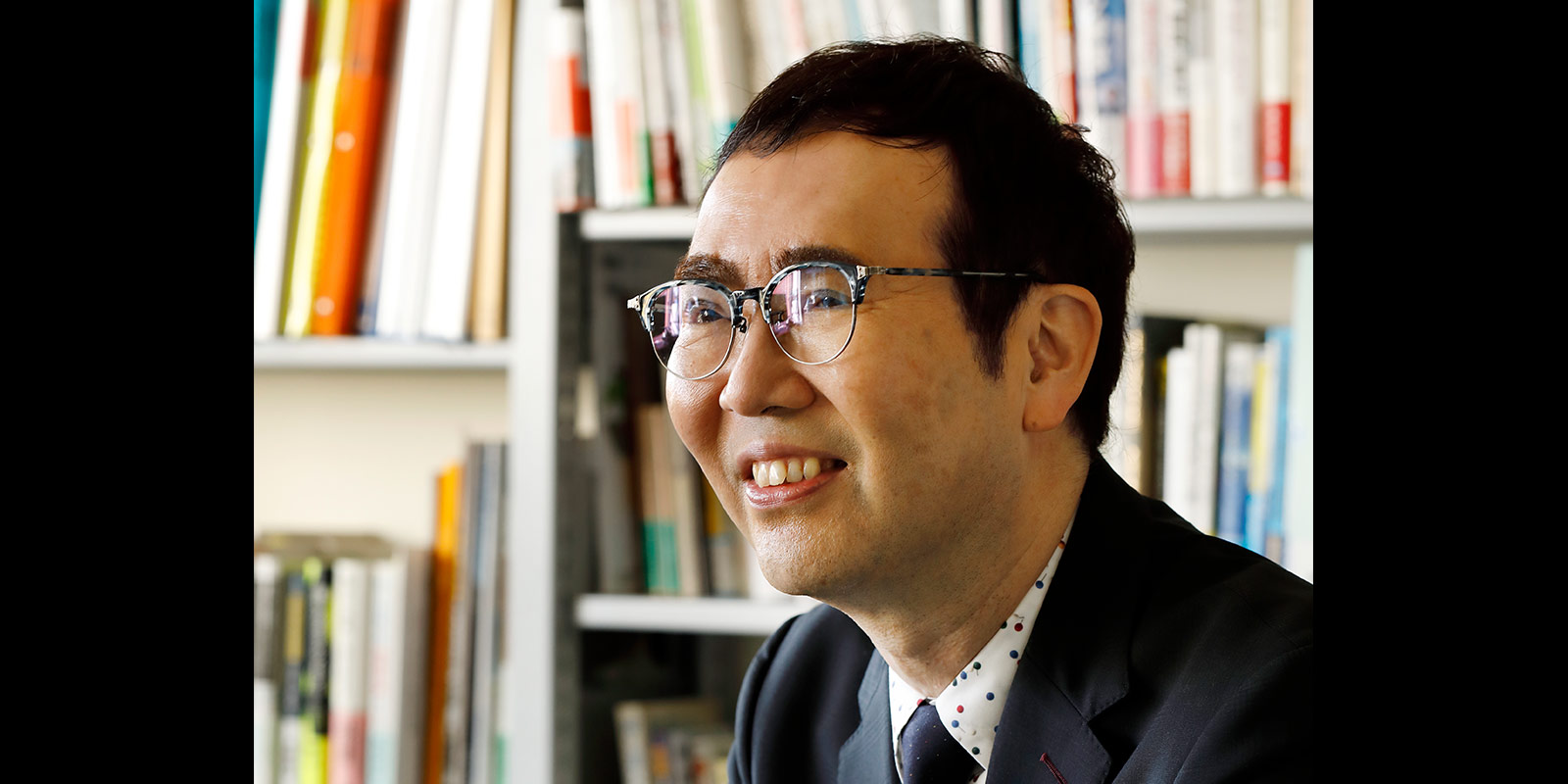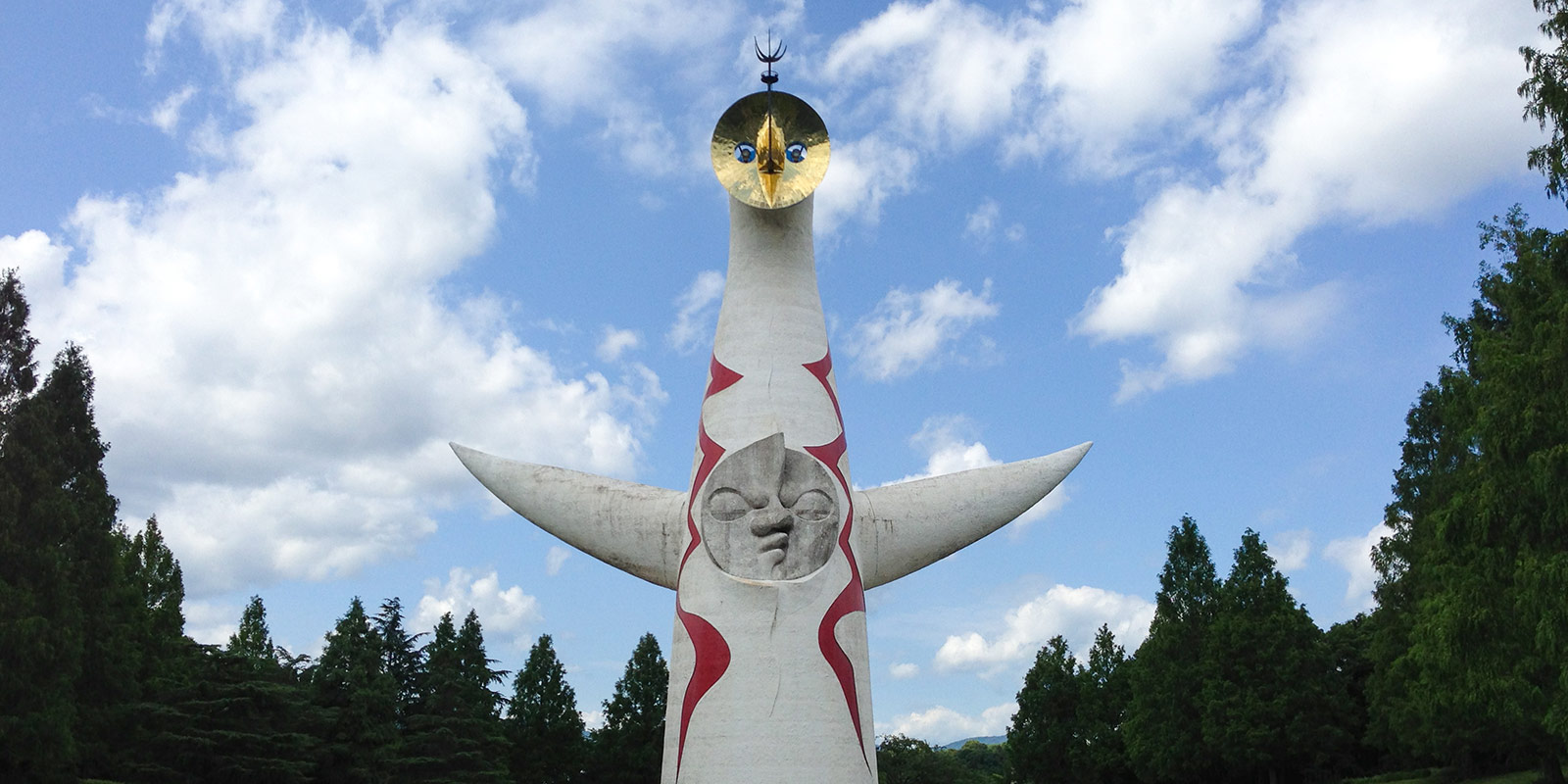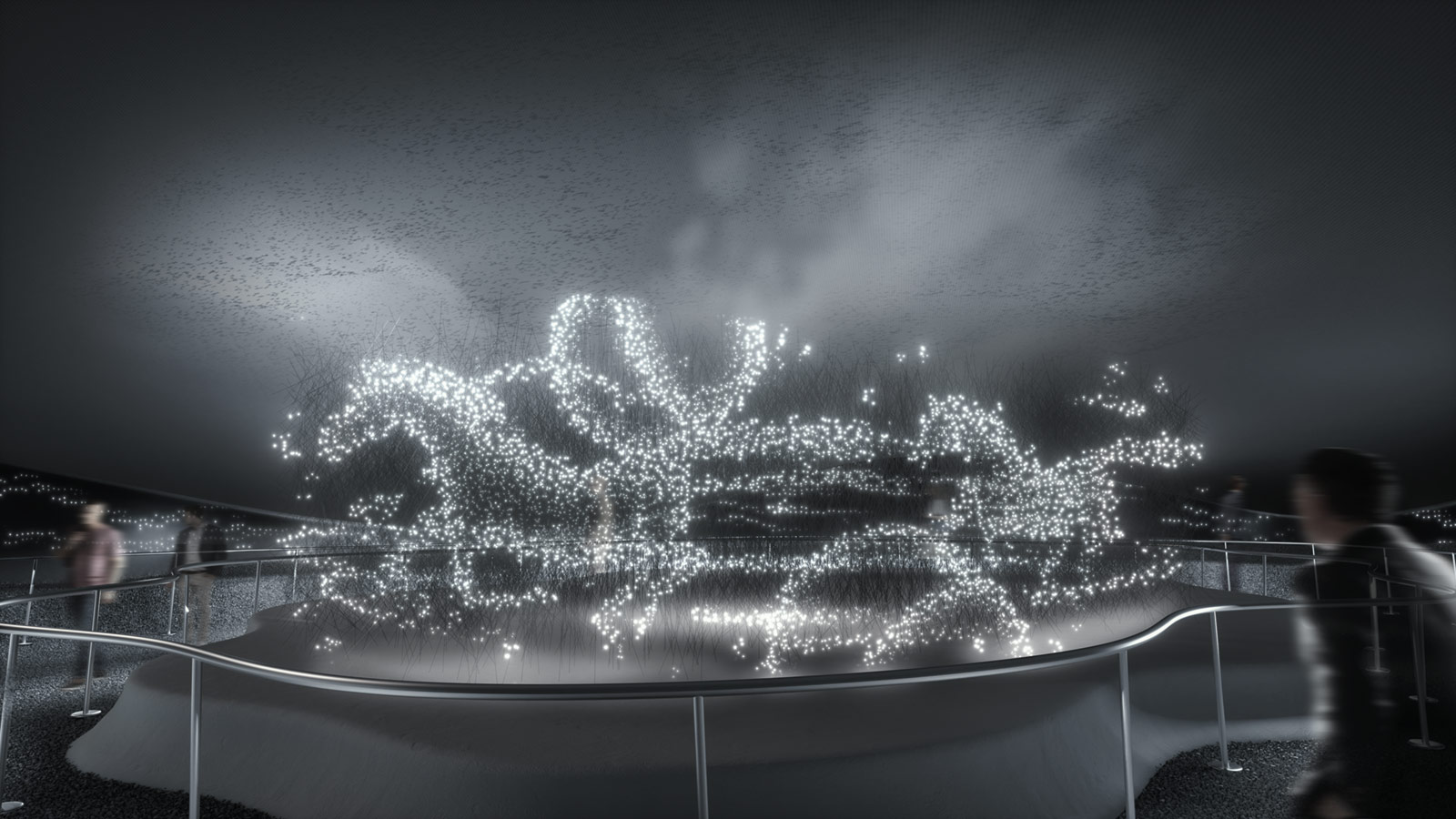Signature moves
Shin-Ichi Fukuoka shares the plans for his signature pavilion at Expo 2025 with Io Kawauchi
A biologist and professor at Tokyo’s Aoyama Gakuin University, Shin-Ichi Fukuoka will be creating one of the eight “signature pavilions” that make up a key part of Japan’s exhibition at Expo 2025 Osaka, Kansai. Entitled “Dynamic Equilibrium of Life,” the contribution of Fukuoka, who is also the author of several bestselling science books, is among the most eagerly anticipated elements of the Expo, which is set to showcase Japanese solutions to global issues of health, life, and science. We caught up with the man of the hour to dig deeper into his concepts for the pavilion.
“Life” is the key theme of the Expo, and you have been asked to explore this from a “Quest of Life” perspective in your pavilion. How do you plan to do that?
The pavilion’s structure draws on organic imagery, as if a single thin cell membrane had softly landed on the ground. The exhibition begins with the question of where we come from [as humans], and then invites visitors to experience the harmony of life and the reasons why life is so precious. Visitors of all ages will be able to leave the pavilion with a new perspective on what life is all about.
What inspired you to create the exhibition?
The 1970 Osaka Expo. I was 10 years old and living in Tokyo at the time, and my parents took me to see the Expo twice. One of the most impressive pieces I saw there was Taro Okamoto’s “Tower of the Sun.”
 Shin-Ichi Fukuoka | Kotaro Kikuta
Shin-Ichi Fukuoka | Kotaro Kikuta
“Over 50 years have passed since the 1970 Expo, has humanity evolved? Have we become harmonious?”
The tower that still stands on the site of Expo ’70?
Yes. Taro Okamoto created it as an antithesis to the theme of the Expo, “Progress and Harmony for Mankind.” There’s no human being at the top of the Tree of Life, the sculpture inside the tower that represents the evolution of life. Its critical message is more like, “Humanity hasn’t evolved, nor has it become more harmonious. Humans, drop your arrogance!” Now that 50 years have passed since the 1970 Expo, has humanity evolved? Have we become harmonious? Taking Taro Okamoto’s message to heart, I’ve sought to re-explore life and our views on it. That’s the starting point of “Dynamic Equilibrium of Life.”
You agree with Okamoto’s sentiment, that we humans shouldn’t think too much of ourselves?
Right. Looking at the history of evolution, homo sapiens is the newest species on Earth, but the one that burdens its environment the most, depredating it and behaving extremely selfishly—the deadliest and most harmful “invasive species” on the planet. But when you look at the history of life, all species have taken the greatest evolutionary leaps by behaving altruistically.
 Taro Okamoto’s “Tower of the Sun” | Flickr/CC
Taro Okamoto’s “Tower of the Sun” | Flickr/CC
What do you mean?
If plants only photosynthesized enough for their own [survival] needs, there would have been no room for animals to evolve. Plants behaving altruistically and photosynthesizing to an “excessive” degree—enough to produce leaves, fruits, and grains—allow creatures that eat these to emerge, which in turn produces predators that eat those creatures. Ecosystems are built through the continuous connection of altruistic paths. Life shares a single environment and maintains a dynamic equilibrium through such reciprocity.
Could you explain the concept of dynamic equilibrium in a little more detail?
Dynamic equilibrium is my definition of life itself. The most important aspect of this is that all life is working hard to destroy itself. Looking at the cellular level, newly formed proteins are destroyed quickly; there’s only one way to make a protein, but there are so many ways to break it. Life is more about breaking than making.
 An artist’s impression of Shin-Ichi Fukuoka’s signature pavilion | © Dynamic Equilibrium Of Life / Expo 2025
An artist’s impression of Shin-Ichi Fukuoka’s signature pavilion | © Dynamic Equilibrium Of Life / Expo 2025
“The general principle of the universe [is] that all things with form eventually turn formless and all orderly things become disorderly”
How so?
Life defies the law of entropy increase. This is the second law of thermodynamics, the general principle of the universe [is] that all things with form eventually turn formless and all orderly things become disorderly. To put it simply, a well-organized desk can get messy quickly if you aren’t careful, and even a structure like a pyramid will decay over a long time.
And life is defying this law?
Yes. It is resisting by daring to break and remake itself, before order-destroying, ever-increasing entropy gets to it. That’s what I mean with dynamic equilibrium. More than 100 years ago, when neither the second law of thermodynamics nor the process by which cells decompose were known, the French philosopher Henri Bergson wrote that “life makes an effort to climb the downhill slope of matter.” I believe that all forms of life are, in a sense, making a valiant effort to climb up a slope that inanimate objects would be forced to roll down.
So dynamic equilibrium is the very state of being alive?
Right. That’s true both on the cellular and the individual level, and Earth’s entire ecosystem, with its interconnected lifeforms, can be viewed as a large dynamic equilibrium. The importance of biodiversity, which has received increased attention in recent years, is in that the more knots we have in the altruistic net connecting all organisms, the more robust the dynamic equilibrium of the planet becomes. My take on life is an antithesis of the modern understanding of it, and is in line with the message that Taro Okamoto sought to convey in 1970.
 Shin-Ichi Fukuoka | Yusuke Abe
Shin-Ichi Fukuoka | Yusuke Abe
What is the “modern” understanding of life?
The view represented by evolutionary biologist Richard Dawkins’s idea of the “selfish gene.” This way of thinking posits that the ultimate goal of genetic evolution is self-propagation, and individual organisms are merely vehicles for genes. At the root of the “selfish gene” idea is the modern mechanistic view that life is a precision machine composed of molecules—a combination of tiny parts and components that together function like clockwork. That leads to the impression that we can simply replace these parts when they break, the idea of manipulating life that underlies modern medicine and especially fields such as genetic engineering and regenerative medicine. This way of thinking is extremely selfish, and wrong.
How did you come to that conclusion?
For the first half of my scientific career, I was a molecular biologist, extracting DNA from cells, cutting and stretching it, and analyzing life mechanistically. However, when all human DNA had been analyzed and identified and the Human Genome Project was declared complete in 2003, what the discovery meant to me was that listing all the “parts” did not reveal anything about the meaning of life. What was revealed, instead, was that mechanistic theory had reached a dead end.
What do you think is the significance of showcasing this thinking in Japan, at the Osaka Expo, at this time?
The Western view of life, based on modern science, has been the originator and propagator of mechanistic theory in the twentieth and twenty-first centuries. In contrast, dynamic equilibrium thinking dovetails well with Eastern philosophy, which posits that life exists in everything. Asking the question “What is life?” anew at the Expo, in Japan, and by showing people that life isn’t selfish but altruistic, can be an opportunity to rethink human behavior and shift toward the altruistic view suggested by dynamic equilibrium thinking.